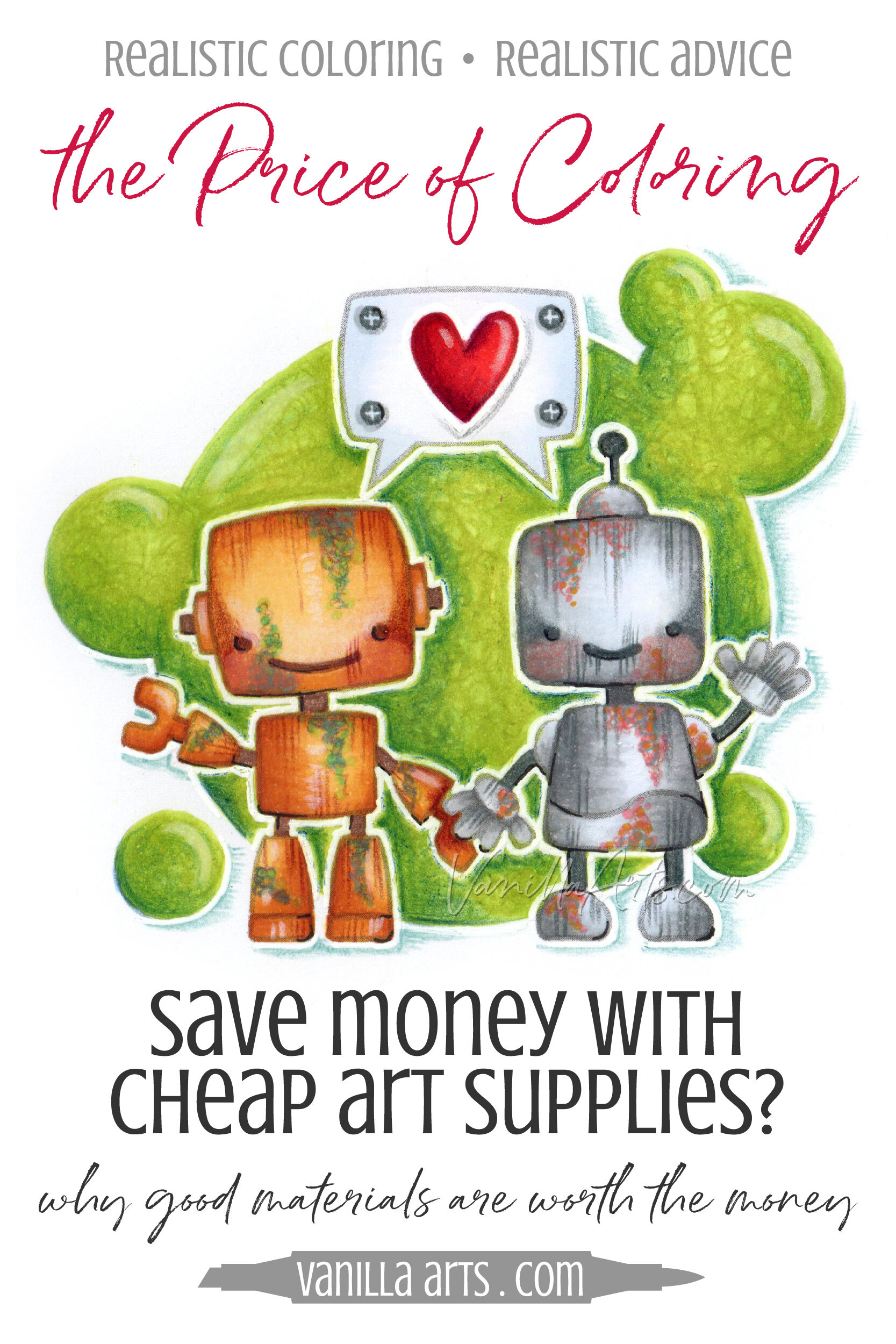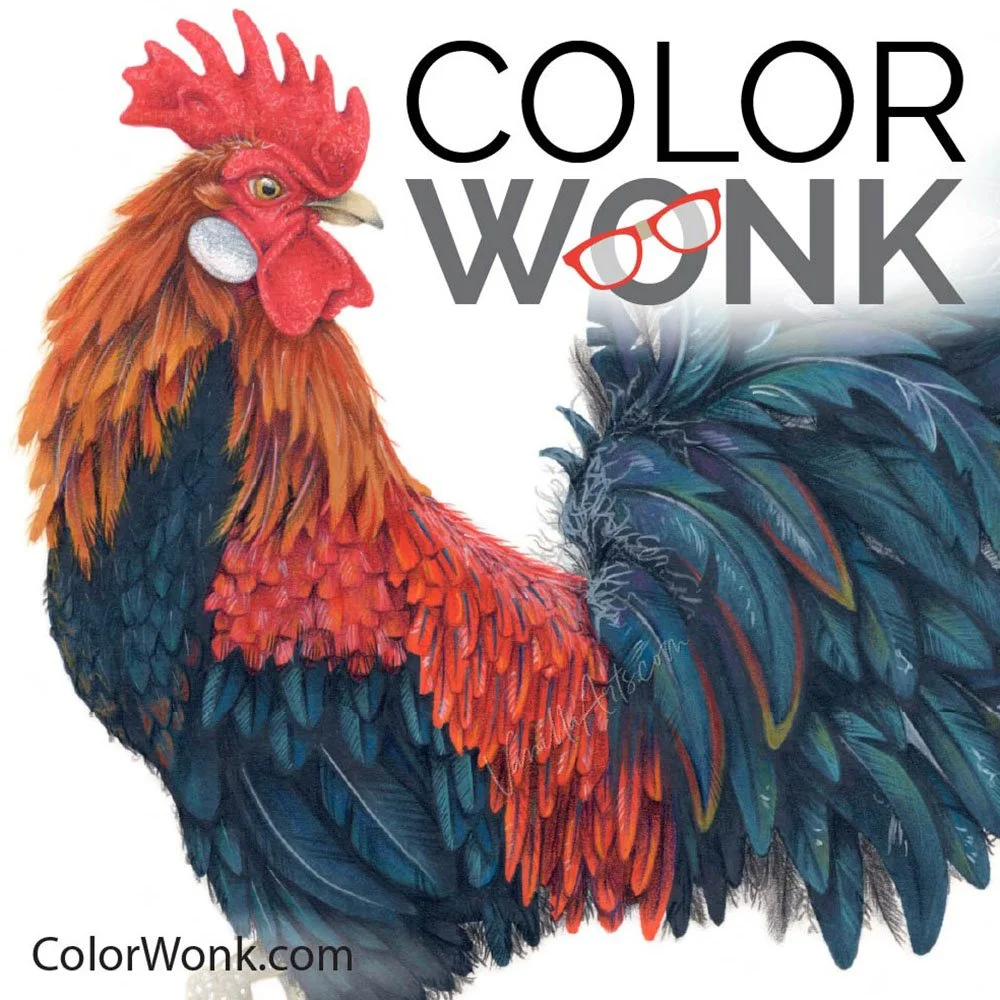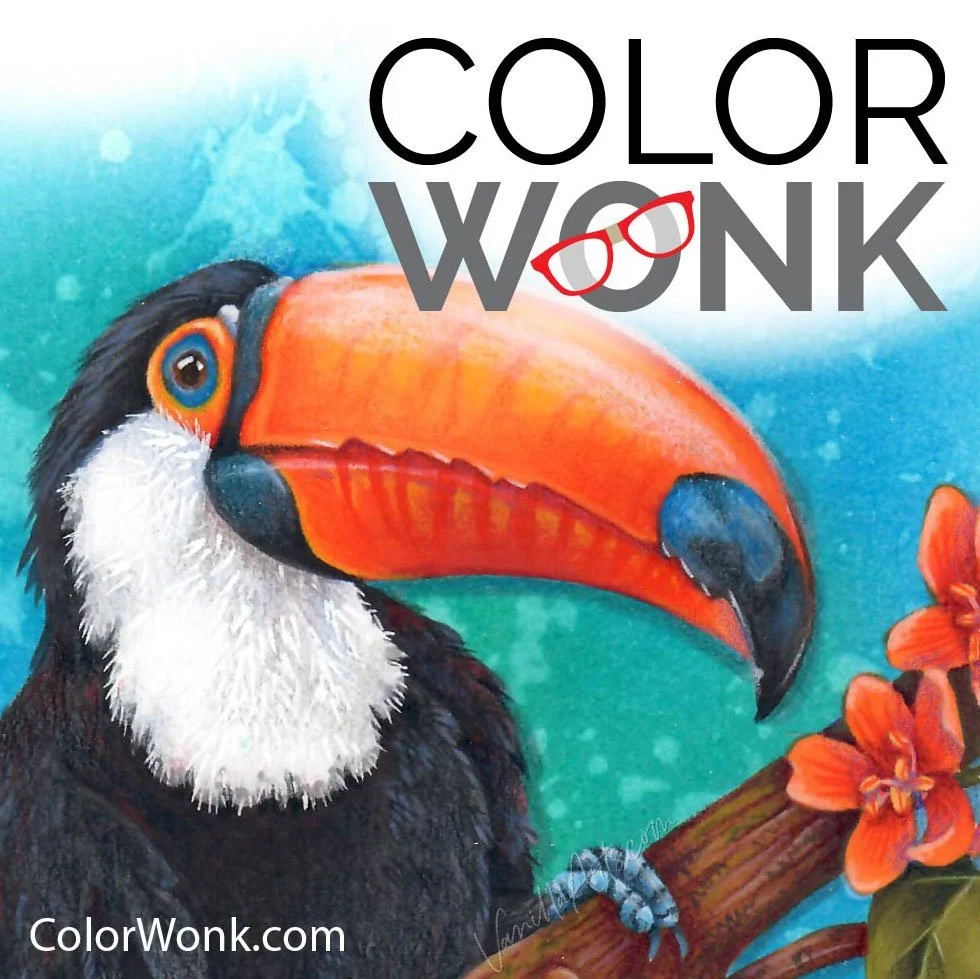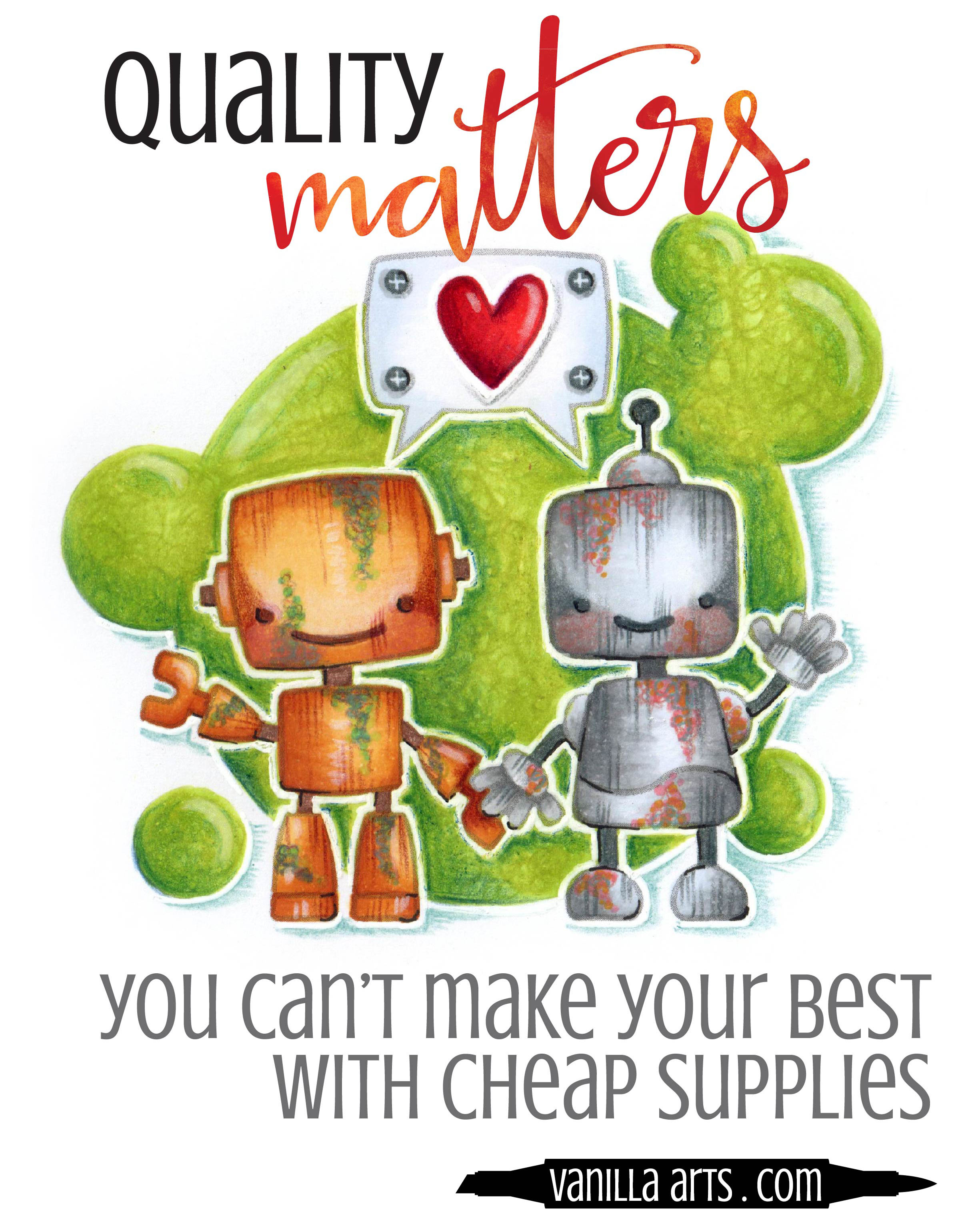Artist Grade Supplies: Why Beginners Should Always Purchase the Best Materials
Buying Art Supplies for the Very First Time?
I’ve worked as a professional artist for over 25 years. I’ve taught Copic Marker and colored pencil classes for the last decade. But I wasn’t born an artist; I was a beginner once too.
I remember the early debates, “should I buy just a few really good markers or should I get the big off-brand bargain set?”
Let’s talk about that today.
Can you save money by learning with inexpensive art supplies?
Yes, but at what price? Beginners often purchase inexpensive, off-brand sets of markers or colored pencils, intending to upgrade once they learn. But cheap art materials make learning harder. They are difficult to use well and frustration leads many students to quit.
You’re standing in the art store…
You’re excited to be starting a new hobby and learn something really cool. You look longingly at all the new Copic Markers, expensive colored pencils, fancy paints…
Oh, if only you could buy them all!
Which simply is not possible. You’re on a budget.
Oh, but wait… there are other brands!
The off-brands are cheaper! Half the price means you can afford 12 colors instead of 6.
Stop.
Don’t do it!
Look, I totally get the "get more for my money" instinct. I paint gigantic Halloween props for a non-profit organization (in my spare time), so I'm a pro at pinching pennies in the paint aisle.
But when it comes to art supplies, please don’t listen to Ebenezer Scrooge.
Really.
Cheap paper, markers, pencils, and paint have a nasty hidden cost.
Artist Grade vs. Student Grade: Which should you purchase?
There’s a bit of wise sounding advice floating around the internet. I come across it every once in a while on blogs or artist forums.
Supposedly, you’re supposed to match your materials to your skill level--
Meaning real artists should buy expensive supplies and everyone else should stick with the cheap stuff.
But Jackson Pollack was a professional and he painted with leftover house paint!
And you see someone on Pinterest drawing the Last Supper with 3 Bic pens!
It kind’a makes you wonder why anyone would ever spend $14 on a tiny tube of paint. Why not stick with the cheap stuff, especially since you're just starting out? Why not save money during the learning stages, then upgrade once your skills are worthy of expensive Copic Markers and pricey paper?
Folks, let me be blunt here.
The common sense rule is wrong.
Wrong, wrong, wrongity-wrong.
Always purchase the best quality product your budget will allow, even if that means buying fewer colors.
Here's the hard truth which no one standing in the paint aisle at the craft store wants to admit:
Quality Matters!
I've seen too many people ruin good ideas with crummy supplies.
I have a friend who is an awesome watercolorist (name redacted so that she will still send me Christmas cards). She wanted to add colored pencil over the top of her paintings. She called me, all geeked about the great deal she got on a set of colored pencils.
But instead of smooth, buttery artist grade pencils, she got the hard, crumbly cheapo pencils normally sold in bulk to elementary schools.
OH MY GOSH, THEY’RE NOT THE SAME THING!
And she wouldn't listen to me; she wouldn't return them.
She insisted that these pencils were her golden ticket to a whole new, amazing line of illustrations.
Uhm, yeah. Not so much.
Project Kindergarten Pencil lasted about two weeks before she gave up in frustration.
She says she hates colored pencils and won't touch them again.
Quality matters.
Because quality is easier to use.
Think about it, my friend is a professional artist. I envy her talent! If anyone could succeed with crunchy crumby pencils, it would be her.
Instead, the pencils broke her.
She couldn’t make them work. They broke her spirit. She lost so much confidence in her ability to make good art that she quit pencils entirely. She went back to watercolor alone and the amazing new direction for her art never materialized.
If a talented professional artist with national recognition and awards can’t get good results from student grade pencils, how is a beginner supposed to learn with them?
Student grade art supplies are made for kids… and suckers
Student materials are developed by companies to meet a price point.
A company decides to sell a box of 12 markers or pads of paper for the magical price of $4.99. Why $4.99? Because the marketing department says that’s a price you’ll love. It doesn't matter what ingredients they use, it can be anything that kinda works, as long as the value doesn't exceed $4.99.
So yes, the paper pills when damp... but hey, it was only $4.99!
And the watercolor dries chalky... but it was only $4.99!
And who cares if the markers run dry in two weeks... because hooray! They were only $4.99 and now you’ll buy more!
Student grade paints, pencils, and markers are cheap because they have a low pigment load. Pigments are the expensive part of the recipe, so if a manufacturer can sneak in extra fillers at the factory, they can retail the product for less.
As for student grade paper? Manufacturers can skimp on the cotton content. Cotton (also called “rag”) is important to produce a well behaved paper that doesn't melt, pill, or buckle when you hit it with ink or paint.
Inexpensive art supplies have a hidden cost— You pay in frustration!
Artist grade products are developed for ease of use
Quality art supplies fill a niche for a small segment of artists.
I want a paint that uses only all-natural binders…
I want paper that stands up to scrubbing when fully saturated…
I want a marker that is vibrant, blendable, and can refilled…
Artist grade supplies meet a rigid standard- either pigment load, durability, blendability, or some other magical quality.
The manufacturer uses whatever ingredients are necessary to meet or surpass the standard.
Price consideration comes after the company ensures that the product performs well.
This is why the price of paint can fluctuate by color- the same brand, all the tubes are all 30ml size, but Cadmium Yellow costs $18 and Lamp Black costs $7.
It's also why paper can get seriously expensive; paper prices are especially performance driven.
How much should a beginner invest in art supplies?
After all, you’re new at this.
And money is tight.
Frankly it doesn’t matter what skill level you’re at. I’m going to give the same advice to the seasoned pro AND the complete newbie.
Buy the best art supplies possible.
Yes, even the newbies. I want you to look at the money you have available and then purchase the best you can afford.
But why? Why would I tell you to spend extra money on supplies for a hobby you may not stick with?
Because cheap supplies behave like cheap supplies.
If you haven't been blessed with talent or if you're a complete beginner facing a steep learning curve, why would you add more hurdles to the learning process?
It’s hard enough to learn but it’s even harder to learn when you’re in a constant battle with your art supplies!
I know marker colorers who refuse to work on anything but copy paper. Then they complain that no matter what they try, they simply can not blend well. This makes me want to scream
"You're right! You can't blend. And you'll never blend! Because you set yourself up for failure every time you color on copy paper."
Quality matters.
Your tools and supplies contribute to your level of success.
Frustration outweighs the best bargain.
The dollars you save on bargain sets are completely wasted when you throw your hands up and quit.
Research to find the best product for your budget.
Eliminate the gold plated varieties but see what artists are saying on the internet about the mid range products. You'll definitely find something affordable that actually works.
But hold on, you’re new at this…
How can you tell the good art supplies from the kiddie stuff?
Signs of questionable quality:
The art materials are available at Big Mart. If a store carries peanut butter AND lawnmowers, chances are they aren't using art experts to stock the craft aisle.
Anything in the school supply, office supply, or game aisle. Stay away.
"Safe for kids". It's sad but true— quality art supplies are not delicious nor are they safe to stick up your left nostril.
Priced significantly lower than all other similar products. Cheap at the store = cheap from the factory.
Only comes in a boxed set. This means there isn't a demand for replacement colors. I wonder why?
No batch number on the product. Knitters know that dye lots vary from batch to batch. Art supplies are the same- if the company isn't keeping track of when something rolled off the assembly line, that means they don't really care.
Same price per unit, despite differences in color or finish. If every pad of paper is the same price, no matter what type or weight, alarm bells should be ringing. Turquoise paint should cost more than white paint. Markers and colored pencils usually have a standardized price but most art supplies do not.
A "Special!" "Low Price!" that is printed directly onto the box or product label. This indicates the price never varies despite market fluctuations. They'll change their manufacturing process or ingredients multiple times before they'll even consider changing the price.
Frequently on sale. This indicates that the wholesale price is low enough for the store to give you a frequent discount and still make money.
Store Brands. Avoid them. Well, there may be a few exceptions… there are some quality products manufactured for a specialty art stores. But it's a big warning when the product is branded by a large craft retailer… especially craft store paint brushes- they are really bad!
The “killer” product. For years, we’ve seen trendy knock-offs, inexpensive Copic-killers that will give everyone great results at dirt cheap prices. There are always killer products in every art category and you’ll see them hyped all over YouTube. Hey, you know the blogger or YouTuber got free samples, right? I’ve tried a lot of killers over the years. They’re never as good as the original.
Are you working with cheap supplies right now?
How does your artwork look?
Is everything you draw and color amazing?
Or do you do a lot of stuff that well, if you’re honest, could be better.
It might not be your fault.
Your recent watercolor disaster may have more to do with the paint than you think.
When you upgrade your supplies you’ll see an upgrade in your skills.
Not because you suddenly got more talented but because good quality products do what you want them to do. They behave. They respond. They don’t have to be nursed, cajoled, or begged to perform.
Expensive art materials won't turn you into Rembrandt but they can get you a little closer.
When you work with intense pigment-loaded inks and paints, your work will be more vibrant, complex, and sophisticated. When you work with markers that blend well, your blending will look better. When you use colored pencils that aren’t loaded with filler, your layers will look cleaner. When you work with paper that’s designed to match your medium, making beautiful lines, texture, and forms will be easier.
Consider stepping up a grade, the next time you shop.
But hey, don't go overboard; it's still pretty easy to make ugly, even on $40 paper.
Professional artists choose artist grade products out of necessity- it produces the best results, it helps their work flow, and it increases the value of the end product.
Hobbyists aren't usually looking at production stats; for you, it's all about enjoying the process. You're usually up coloring at 1am because you're having too much fun to go to bed.
Fighting with your materials seriously decreases the fun factor.
Battling with cheap supplies eats away at your confidence level. If at first you don't succeed, you might try again. But after the second failure, most of us start listening to the devil on our shoulder who says "you stink".





















